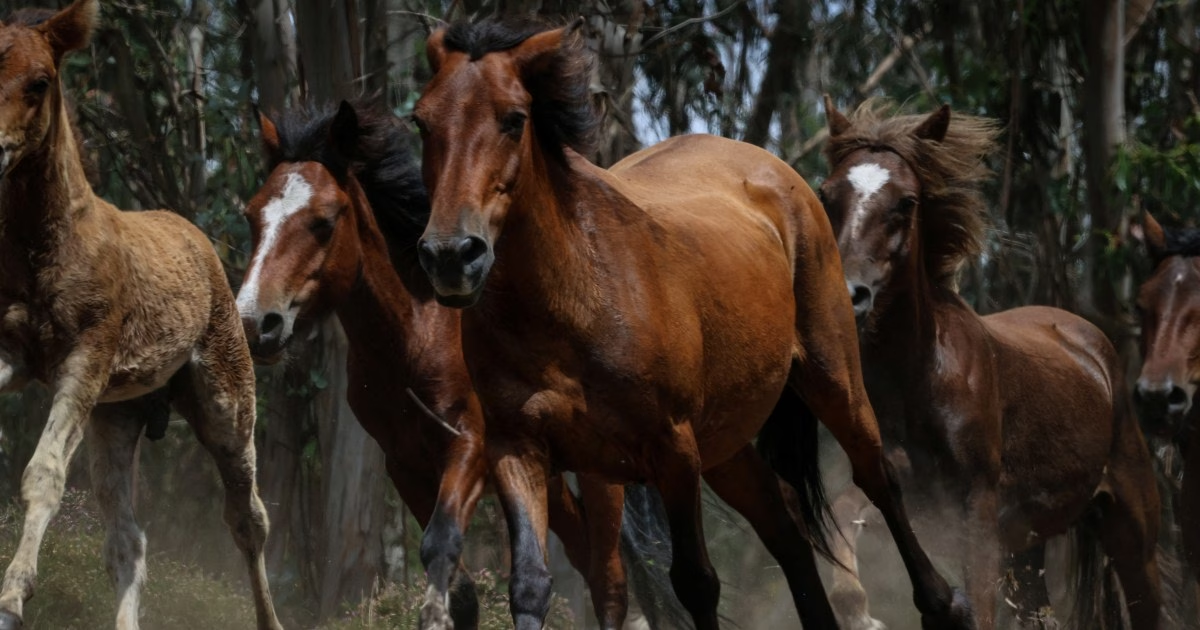<
div aria-live=”polite” aria-atomic=”true”>
Wildfires that formerly devastated the forests above the Spanish village of Barro each summer have significantly decreased since Lucia Perez began grazing wild horses in the area.
“Fires were a yearly occurrence, but since we started coming here in 2019, there was only one small fire in the first year, and none since,” said Perez, 37. She explained that the horses help reduce the risk of wildfires by clearing vegetation between trees, preventing fires from getting started and spreading.
Fire prevention is just one of the ecological benefits wild horses provide in Galicia, a region in northwestern Spain known for its fragile ecosystems.
Scientists state that Europe’s largest herd of wild horses plays a critical role in maintaining these landscapes, although the population has dropped dramatically. In the 1970s, about 22,000 wild horses roamed the region’s mountains, forests, and heathlands. Today, the population is halved.

On the Serra da Groba heathland, 80km (50 miles) southwest of Barro, wild horses feed on the yellow flowers of gorse—a highly combustible plant. “By selectively clearing [gorse], the horses help prevent wildfires,” said Laura Lagos, a researcher at the University of A Coruna.
Horse grazing allows other plants, such as purple-flowering heather and white asphodels, to thrive, Lagos explained. “It also helps preserve the heather around peat bogs, which are rich in sphagnum mosses—one of the most effective ecosystems for carbon sequestration,” she said.
A 2021 study by the University of A Coruna, in which Lagos participated, found that wild horse grazing is the most effective method for preventing wildfires, promoting plant biodiversity, and capturing carbon. The study compared this method to other land uses, including planting long-term pine forests, short-term eucalyptus plantations, and grazing by domesticated animals.
Although sheep and cattle can also help reduce wildfire risks through grazing, Lagos noted that wild horses are uniquely adapted to Galicia’s rugged terrain. She highlighted one distinctive characteristic: “moustaches that appear designed to protect their lips from the prickly gorse.”
Hotter, drier weather due to climate change is increasing the frequency and intensity of wildfires in Galicia. From 2001 to 2023, fires burned through 970sq km (375sq miles) in the region, according to Global Forest Watch.
This trend has coincided with the proliferation of eucalyptus trees, brought to Galicia from Australia by a missionary in the 19th century. The trees are pyrophytes, meaning they rely on fire to release and disperse their seeds. Their spread has contributed to heightened fire risks while also reducing grazing pastures for wild horses because only ferns grow beneath them.
Galicia’s eucalyptus forests now account for 28 percent of the region’s total tree population, according to a
Source: https://www.aljazeera.com/gallery/2025/3/26/wild-horses-help-prevent-wildfires-in-spain?traffic_source=rss








